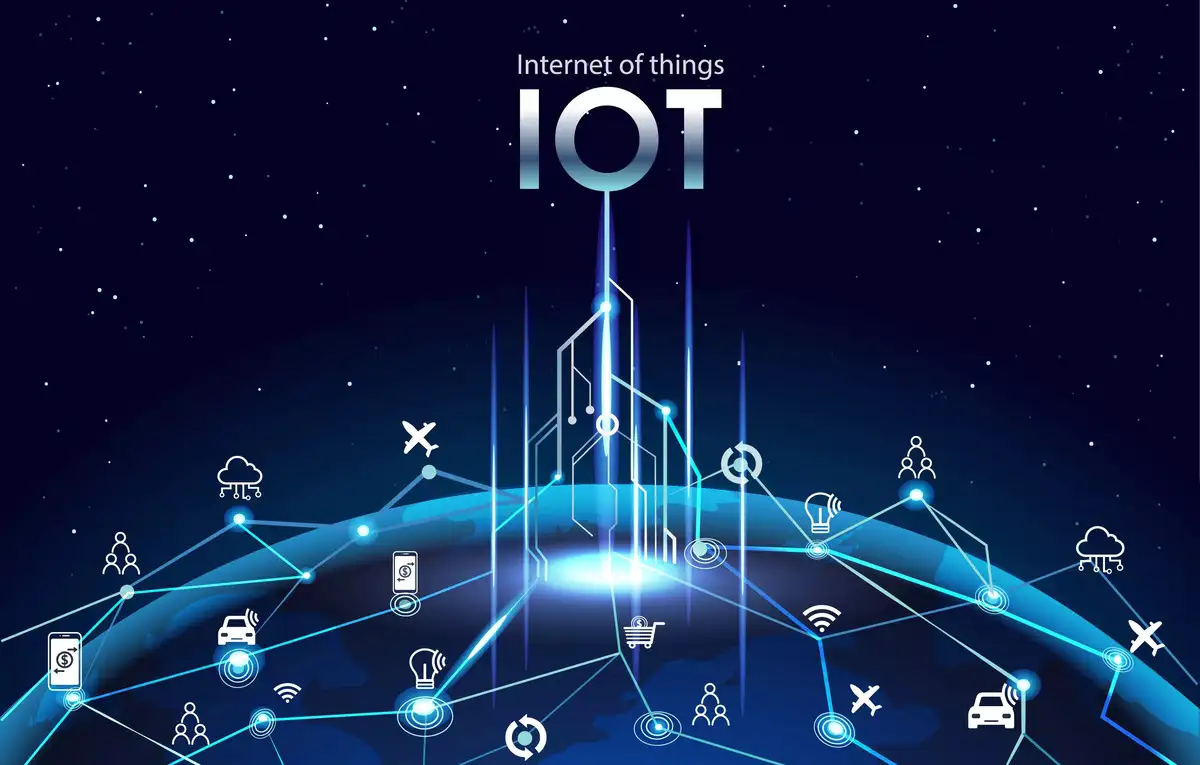
Internet of things, a term that we hear a lot these days but, what do we mean when we say ‘things’? The ‘things’ refer to the devices that are connected via the internet with each other. And because of the rapid evolvement of technologies, it became easier to connect anything- (any device)- through the internet which eventually will enrich our daily lives. Making everything connected to each other is what makes IoT so powerful. Smartphones, smartwatches, smart glasses and even home equipment, including thermostat, security cameras, lights all are included in the ‘things’. IoT systems collect data from your environment to simplify your daily tasks by connecting and automating the devices- (things)- used. In this blog I will talk about what is internet of things? How does it work? Why do we need it?
What is IoT?
Internet of Things (IoT) is an evolving concept of the internet of things that refers to all devices that can be connected between each other and by internet, which collect and share data to perform certain tasks or help in improving performance of the process. The number of devices that are connected to the internet are increasing worldwide, and they are collecting and sharing data.
How does IoT work?
There are basically four layers to IoT. The first layer is sensing/device layer, which is the ‘things’ part of the IoT. This thing is the embedded device. It has sensors and actuators. The sensors collect data from the surrounding based on specific function while the actuators do the required action. For example, temperature sensor, atmospheric pressure sensors, and light sensors. They basically collect data and give it to the embedded device and based on the received data actions will be taken. After data has been collected through sensing /device layer, it goes to the connectivity layer, it is descent to the cloud using the internet. This connection is generally meet through one of the methods like Wi-Fi, Bluetooth, RFID, ZigBee and etcetera.
Why do we need IoT?
It is true that we still had devices used to do things for us before IoT existed, right? Now, someone may ask about the difference with IoT and without IoT? The difference is that without IoT, you had to run from machine to machine, telling them to do a task for you. On the other hand, with IoT, the devices can interact, collect, and share data just like humans do. Therefore, using IoT will reduce human intervention and machines will do the task based on their communication with each other and will analyze the collected data to take the best possible action. IoT can help in making life easier. A smart lighting system adjust the brightness as the sun sets, the sound system optimizes the music volume in every room, a refrigerator with IoT keeps track of the food eaten and automatically re-orders delivery. IoT can help increase the security by enabling smart cameras, doorbells and security systems that keeps your home safe. In addition to that, IoT enables smart resources management at the home or industrial levels, reducing our impact on the environment. Moreover, using IoT helps in increasing productivity and reducing costs.

